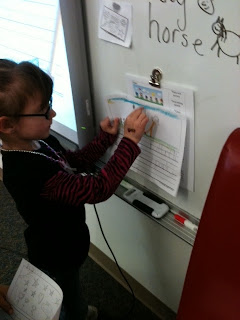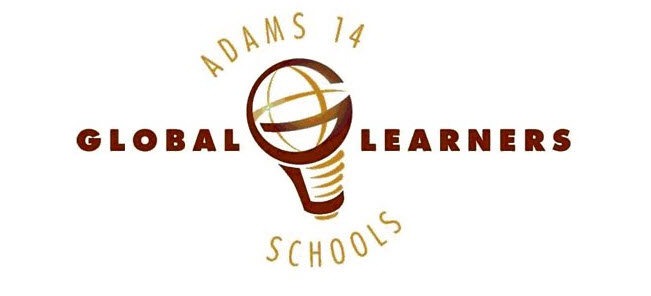Thursday, October 6, 2011
Free Amazing Resource
Just because I am not in Adams 14 anymore does not change how I feel about finding and sharing amazing resources. The first resource helps secondary teacher s and the second helps all reading teachers in K-8. I bolded them just in case you do not feel like reading and just want to go directly to them.
The first one is SAScurriculumpathways.com. It has great inquiry based lessons for core subjects and aligns with the standards. It has won all kinds of awards.
Language arts teachers....I AM ABOUT TO MAKE YOUR LIFE EASIER!
Go to the writing reviser....copy and paste and writing and viola...it checks all kinds of grammar, tells you how many simple, compound, complex, compound sentences along with some great grammar that aligns with the daily grammar you do.
The other great find readworks.org that already has lessons formatted in the I-do, we do, you do format.
I will continue to follow the Global Learners Blog. I learn so much from everyone.
Penny
Thursday, September 15, 2011
Change in Participation
The Global Learner Blog will be having new additions this year! Fifteen very motivated teachers joined me at the annual TIE conference in Copper Mountain during July. Each attendee is working on a project implementing technology resources and ideas from the conference. We'll post updates as they progress. Some projects include: iPad implementations, student film creations, Google Lit. Trips, student portfolios, and much, much more!
If you are working on a project (with or without technology), we would love to know about it. Please encourage teachers throughout the Adams 14 Family to read our blog, get ideas, and share they are doing with the world!
Tuesday, August 23, 2011
Ms. Springer's Blog: First Week of School
Ms. Springer's Blog: First Week of School
Saturday, June 11, 2011
Recycled Fashion
Friday, June 10, 2011
Kindergarten Writing Rubric

My colleague, Mrs. Nazarenus, developed an amazing rubric that my children found to be helpful as they wrote during writing time! Kate identified six focus skills that the kids need to work on in order to produce grade-level work. The skills include: conventions, ideas, organization, word choice, sentence fluency and voice. Kate included kid-friendly pictures and words so that they feel comfortable using the rubric as they write. The photo included within this blog entry shows a student referring to the rubric as she worked on her piece of writing!
THANK YOU MRS. NAZARENUS FOR CREATING SUCH A FUN, USEFUL AND PRACTICAL RUBRIC!
Kindergarten Graduation!

The kids graduated from kindergarten and are ready for 1st grade! Yay! This year was an amazing year in kindergarten. All of the students who began the school year with me ended up ON or ABOVE grade-level! Congrats kiddos! The children learned how to read, write and spell so many words. I am so proud of the progress that they have made and I can't wait for them to succeed with the rest of their educational careers!
To celebrate the end of the year, the children decorated their own graduation cap, ate scrumptious cookies and put on a concert for their family and friends! Thanks to the music teacher, Mrs. Lewis, the children sang and chanted nearly 15 songs as they enjoyed being the center of attention!
Congrats to all of the kids for making this year one of the most memorable and fun years ever! Good luck in first grade!
Year Reflection ( a bit late!!)
In addition to learning how to seamlessly integrate technology into the classroom DAILY, I also realized just how powerful and beneficial collaboration can be. Working with all of you, especially my mentors Jon and Kelly, really inspired me and I appreciate all the ideas you shared!
Kelly and Dave, you are amazing! Endless thanks!
:)
Tuesday, May 31, 2011
End of the Year
Friday, May 27, 2011
Wednesday, May 25, 2011
A Map of My Pet: Creative Writing Lesson

I recently did a creative writing project based on "My Map Book" by Sara Fanelli which was talked about during a writing workshop we did this year. The purpose was to move students to the Advanced designation on our Analytic Writing Rubric under the Word Choice category. Since so many students struggle with lackluster word choice we began the lesson by describing a picture of a dog using precise and colorful vocabulary. We put some words like "big" and "small" on the banned word list and generated graphic organizers with alternative word choices. The lesson plans are in the Smart Notebook file. Take a look at it here. The students had a blast and loved writing directly in Smart Notebook.
Tuesday, May 24, 2011
Our 6 Lessons
Reading Line and Bar Graphs (review)
Glet: 3.1.b. Read, interpret and draw conclusions from a line graph, bar graph, circle graph and frequency table.
Objective (This is an overall objective. There would be individual objectives for each day): Students will draw conclusions from line and bar graphs by correctly answering questions using the given powerpoint.
Formative Assessment: Questions from one line graph and one bar graph will be checked.
I DO: Demonstrate how to answer 2 questions from a line graph and 2 questions from a bar graph
WE DO: Answer 2 additional questions from a line graph and 2 additional questions from a bar graph.
YOU DO: In the computer lab, students will pull up the powerpoint off my website. They will then choose 6 graphs to complete the questions associated with it.
Vocabulary: Line graph, Bar graph, x-axis, y-axis, labels, titles
Lesson 2
Area and Perimeter of Parallelograms and Rhombuses
Glet: 4.5.b Solve problems involving area of polygons (square, rectangle, parallelogram, rhombus, triangle)
5.4.a. Use formulas and/or procedures to solve problems involving the perimeter of a polygon.
Objective: Students will use formulas to solve problems involving the area and perimeter of parallelograms and rhombuses.
Formative Assessment: clicker activity, and clicker quiz
I DO: Have students put notes in their MSB on how to find the area and perimeter of parallelograms and rhombuses. Model how to find the area of one parallelogram and one rhombus. Review how to find perimeter (have already covered perimeter in another lesson so this shouldn’t take long).
WE DO: Students will work with their elbow partner on solving the questions with clickers. If the majority of the class gets the first few wrong, pull back to the I DO.
YOU DO: Find the area of 1 parallelogram or rhombus and write in full sentences how they found the answer. Share to the rest of the class or maybe a partner. Find the perimeter of a parallelogram or rhombus and write in full sentences how to find the answer.
Vocabulary: parallelogram, rhombus, base, height, diagonal line, area, perimeter
Lesson 3
Decimal Operations
**This lesson was used as a fun thing to do after csap. It’s a good review game for 6th grade but would be better used in a 4th or 5th grade classroom. There are some area and perimeter problems in this.**
Glet: 6.2.b. Use and explain strategies to add/subtract decimals and fractions in problem-solving situations* (common fractions with like and unlike denominators, mixed numbers, and decimals to thousandth.
Objective: Students will add/subtract/multiply decimals in the koosh ball game.
Formative Assessment: Answers given on the whiteboards
I DO: Review by modeling 1 problem where you have to line up the decimals when you add or subtract. Model one problem on how to multiply decimals.
WE DO: Students do 1 adding or subtracting and 1 multiplying decimals problem before the game begins.
YOU DO: The koosh ball game.
Vocabulary: line up decimals, add, subtract, decimal
Lesson 4
6th Grade Math: Order of Operations
Glet: 6.2.a Apply order of operations, including exponents, with positive rational numbers.
Objective: Students will remember the order of operations by creating a rap that correctly states each step.
Formative Assessment: The rap with correct steps
I DO: State the order of operations. Go over one example of why the order of operations is important.
WE DO: Talk about the different ways to remember it. Use the hopscotch activity to help them remember. Watch rap videos.
YOU DO: Create rap videos in groups of 2-4
Vocabulary: Parentheses, Exponents, Order of Operations, math sentence
Lesson 5
Nutrition Facts: Fraction, Decimal, and Percent
Glet: 1.4.a Demonstrate equivalence of relationships among fractions, decimals, and percents in problem-solving situations (for example, two students out of eight is the same as 25%).
Objective (This is an overall objective. There would be individual objectives for each day): Students will determine the fraction, decimal, and percent of one serving of various nutrition facts on a type of food.
Formative Assessment: Each day there will be a certain number of slides that are due.
Overall formative assessment: Power Point with correct answers.
I DO: Using nutrition facts of Pringles, model how to answer 2 questions similar to the ones on their power point.
WE DO: Using nutrition facts of Pringles, answer 2-5 more questions as a class that are similar to what will be asked on their power point.
YOU DO: In pairs, students will choose a food item that they are able to bring the nutrition facts in for. Together they will answer all the questions on the power point.
Health Vocabulary: Nutrition Facts, Sodium, Total Fat, Iron, Vitamin C, Calcium, Protein, Sugar, Calories, Saturated Fat, Fiber, Serving
Math Vocabulary: Fraction, Decimal, Percent, Top Dog Division, Least Common Denominator
Lesson 6
Classifying 2-D and 3-D shapes by attributes
Glet: 4.2.a. Identify, compare, and analyze the attributes of two-and three-dimensional shapes and develop vocabulary to describe the attributes (for example, acute, obtuse, right angle, parallel lines, perpendicular lines, intersecting lines, and line segments).
Objective: Students will analyze the attributes of two and three dimensional shapes by classifying shapes into categories based on attributes.
Formative Assessment: Finished word document with all pictures cut and pasted into appropriate categories and explanations of why shapes were placed in each category.
I DO: Review attributes of shapes and teacher cuts shapes out of a word document and pastes them to another word document.
WE DO: With a partner, students discuss attributes, write down their ideas, and share out ideas with the class.
YOU DO: Student pairs will use a lap top to go to the class wiki and access a premade word document containing a variety of 2 and 3 dimensional shapes. Students will then cut each shape out of the document and paste them into a new document where they create categories and explain why each shape is placed in a specific category.
Extension: Groups will share their categories and with the whole group, class will create a final document on the teachers computer/ smart board. Groups will discuss any disagreement in shape placement until there is consensus.
Vocabulary: parallel lines, perpendicular lines, right angles. Opposite angles, opposite sides, rectangle square triangle, rhombus, parallelogram, trapezoid, pentagon, hexagon, heptagon, octagon, nonagon, decagon, dodecagon, calendar, pyramid, cube, prism, vertices, face, edge.

